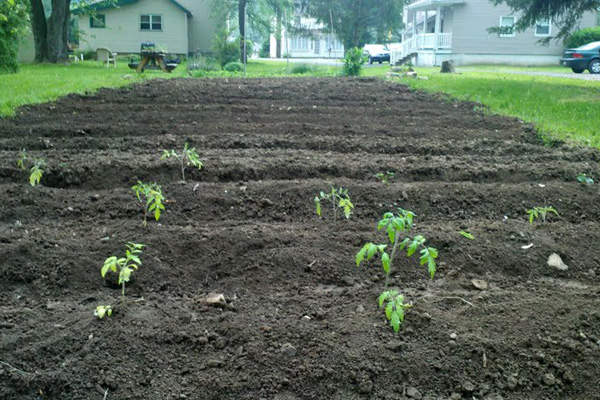-

Erin Donahue -

Christina Barkanic -

Brittany Trott -

Emily Wiley -

Jessica Reilley -

Chris Raines -

Will Nichols -

Emily Reddy -

Michele Marchetti -

Michele Frank -

James Gherardi -

Kit Henshaw -

Christina and Erin -

Kim Tait -

Erin McKinney -

Steve Spanelli -

Sam Komlenic -

Katherine Taylor Grofic -

James Eisenstein -

Jamie Oberdick -

Anna Lombardo -

LacCreta Holland -

Tony Ricci -

Local Food Journey -

Laura Young -

Kristin Camplese -

Harrison's Fresh + Local -

Danielle Matalonis -

Kristine A. -

Linda Weaver -

Naomi Elle Schwartz -

Dana Stuchul -

Cara McShane -

Brittany Smith -

Jessica Illuzzi - Frosty
-

Jessica Paholsky -

James Sechrengost -

Brad Yeckley -

Maya Althouse -

Jordan Reabold -

Kim Chase -

Maria Bryant - Alexandrea Scott
Frost a possiblity for Saturday morning: here’s how to protect your garden
Posted by Jamie Oberdick on 05/20, 2015 at 08:15 AM

Young tomato plants such as these are especially susceptible to frost damage.
We live in Central Pennsylvania, where the weather can go from July to October in less than a day. This morning, under slate gray skies, a chilly wind blows and it feels more like we are getting close to Halloween than Memorial Day.
As can be the case with these late spring cold snaps, frost is a possibility. Right now, looks like Saturday morning is the best chance for it. This might be bad news for your garden. However, you can take steps to avoid a frost catastrophe that could cause you to replant.
First off, a bit about the nature of frost. It’s most likely to form on clear, calm nights with little or no wind. Radiational cooling is what causes frost this time of year, as heat radiates from the ground into the air. Wind hampers this, and clouds help to trap the heat at the surface, aka the Greenhouse Effect.
Frost also can be more likely to happen in low-lying areas, as cold air is heavier and tends to “drain” to these spots. This can be on a macro scale, such as a valley, or on a micro scale, such as a depression in a field.
If you live in a spot that tends to get frost more than other areas, then you definitely should take steps to protect plants. Rural areas tend to be colder than more “urban” areas such as State College, Altoona, Clearfield, etc. But even if you have a garden in neighborhood as opposed to a wide-open area, better safe than sorry.
The best thing to do is cover your plants. You can either cover them with a tarp or old bedsheet, or you can use gallon milk jugs with the bottom cut out if the plant is small enough. If they are in pots, simply bring them inside; even an enclosed unheated garage is better than exposing them to the outside.
It’s a good idea to keep them covered or inside until mid-morning, to make sure you have them protected until the temperature rises and the frost is melted.
Keep in mind, this is only for frost-sensitive plants like tomatoes, peppers, beans, watermelons, pumpkins, etc. Frost-hardy veggies like spinach, radishes, lettuce, broccoli, etc. will be just fine; they actually like this weather.
So, Friday be prepared and watch the forecasts…nothing worse than seeing all that hard work you put into your garden ruined by our crazy Central PA weather.
![]() Author: Jamie Oberdick
Author: Jamie Oberdick
Bio: Editor, Local Food Journey | Passionate about supporting local food in Central PA
- Our Local Food Journey comes to an end
- Winter isn’t a quiet time at the farm
- Get the taste of garden season right now by growing herbs indoors
- All you need to know about PASA’s Farming for the Future conference









NO COMMENTS